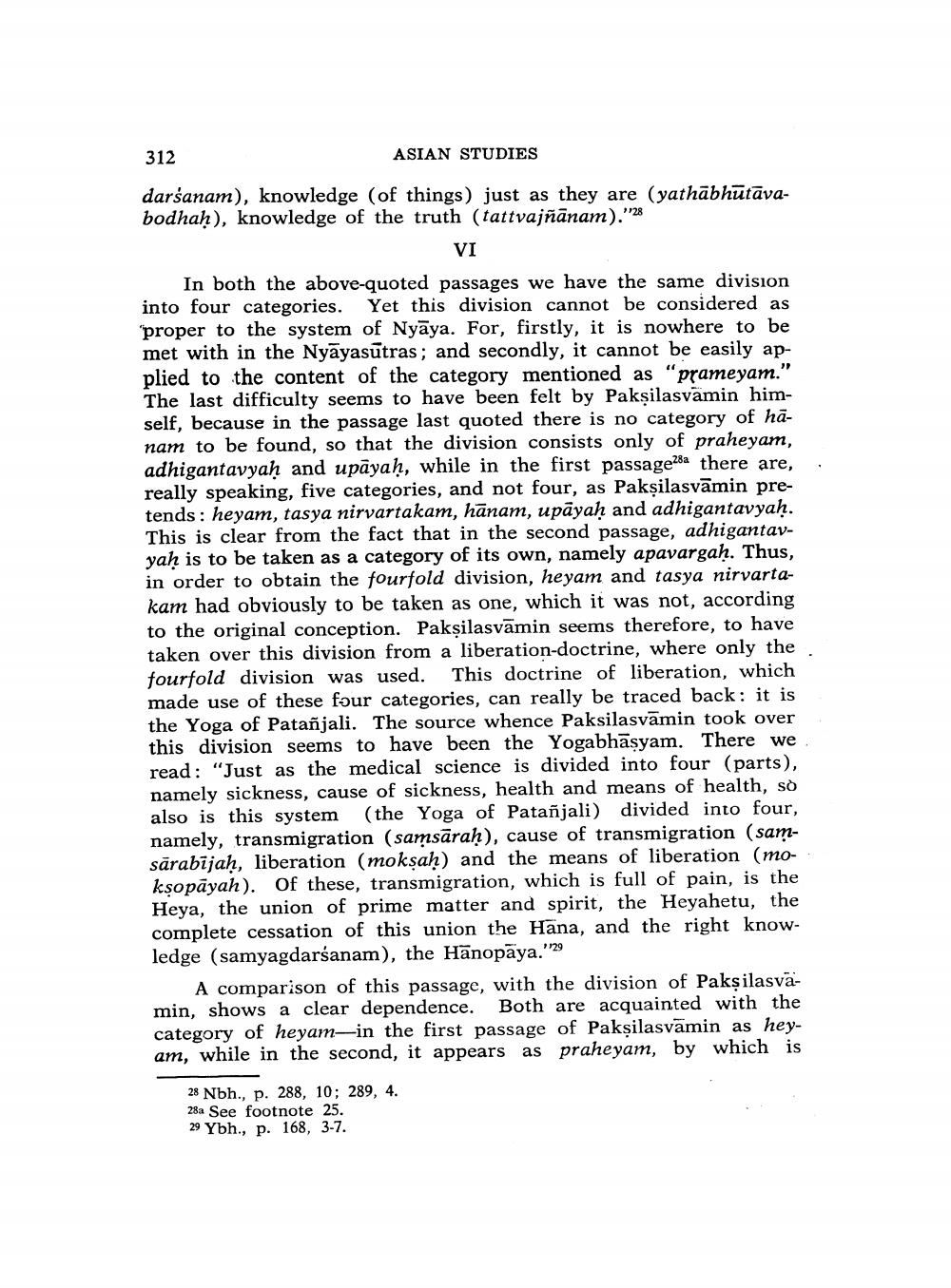________________
312
ASIAN STUDIES
darśanam), knowledge (of things) just as they are (yathābhūtāvabodhah), knowledge of the truth (tattvajñānam)."28
VI In both the above-quoted passages we have the same division into four categories. Yet this division cannot be considered as "proper to the system of Nyāya. For, firstly, it is nowhere to be met with in the Nyāyasūtras; and secondly, it cannot be easily applied to the content of the category mentioned as "prameyam." The last difficulty seems to have been felt by Paksilasvamin himself, because in the passage last quoted there is no category of hānam to be found, so that the division consists only of praheyam, adhigantavyaḥ and upāyaḥ, while in the first passage282 there are, really speaking, five categories, and not four, as Paksilasvamin pretends : heyam, tasya nirvartakam, hānam, upāyaḥ and adhigantavyaḥ. This is clear from the fact that in the second passage, adhigantavyaḥ is to be taken as a category of its own, namely apavargaḥ. Thus, in order to obtain the fourfold division, heyam and tasya nirvartakam had obviously to be taken as one, which it was not, according to the original conception. Paksilasvāmin seems therefore, to have taken over this division from a liberation-doctrine, where only the fourfold division was used. This doctrine of liberation, which made use of these four categories, can really be traced back: it is the Yoga of Patañjali. The source whence Paksilasvāmin took over this division seems to have been the Yogabhāsyam. There we read: "Just as the medical science is divided into four (parts), namely sickness, cause of sickness, health and means of health, sò also is this system (the Yoga of Patañjali) divided into four, namely, transmigration (samsāraḥ), cause of transmigration (samsārabijaḥ, liberation (mokşah) and the means of liberation (moksopāyah). Of these, transmigration, which is full of pain, is the Heya, the union of prime matter and spirit, the Heyahetu, the complete cessation of this union the Hana, and the right knowledge (samyagdarśanam), the Hānopāya.''29
A comparison of this passage, with the division of Paksilasvamin, shows a clear dependence. Both are acquainted with the category of heyam—in the first passage of Paksilasvamin as heyam, while in the second, it appears as praheyam, by which is
28 Nbh., p. 288, 10; 289, 4. 28a See footnote 25. 29 Ybh., p. 168, 3-7.




